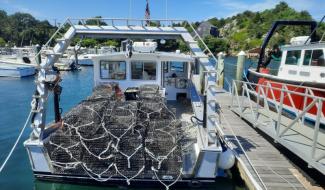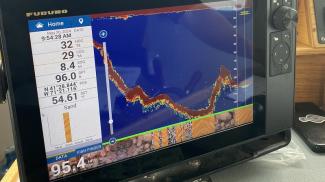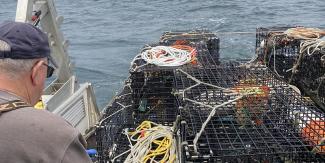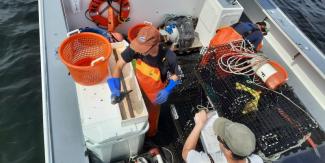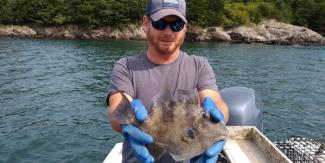Fish Pot Survey
Background
In 2021 the Rhode Island Division of Marine Fisheries instituted a ventless fish pot survey to assess and standardize a time series of relative abundance for structure-oriented finfish, particularly black sea bass, in Narragansett Bay and Rhode Island Sound. Data from this survey is used to evaluate the abundance and biological characteristics of species that have relatively low catchabilities in the demersal trawl survey.
Survey Design and Sampling Methods
The survey is conducted using unvented black sea bass style (43.5” L, 23” W, and 16” H) fish pots constructed of 1.5” x 1.5” coated wire mesh, single mesh entry head, and single mesh inverted parlor nozzle. Fish pots are a passive fixed fishing gear, dropped to the seafloor and attached to a surface buoy by endlines. Strings of five traps each are set at both stratified random station locations and fixed station locations in Narragansett Bay and Rhode Island Sound. Traps are fished baited with clam bellies of one-night soaks. Structure oriented fish may be attracted to the traps either by the bait or by the potential habitat provided by the trap structure. Upon hauling all gear types, the catch is sorted by species. Finfish are measured for length and weighed. Invertebrates are measured using a species-specific appropriate metric or counted.
Sampling Frequency
The research project runs from approximately May through October annually.
For more information about the survey please contact Rich Balouskus

